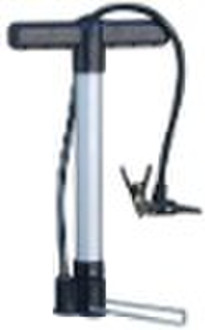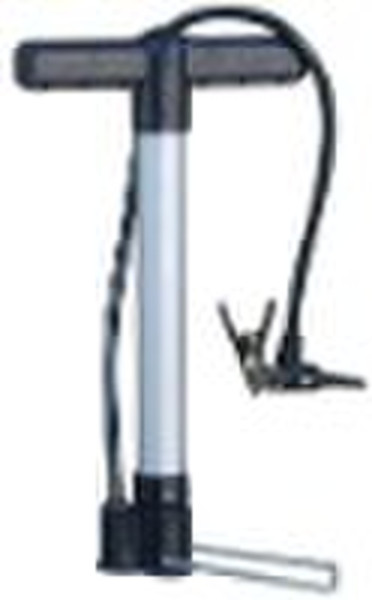自行车打气筒
原价: 0,20 USD
邢台市, 中国

Zizhen Zhang
联系人姓名
基本信息
| 出生地 | Hebei China (Mainland) |
|---|---|
| 牌子的名字 | HFT |
| 模式的数量 | bicycle pump |
bike tyre pump/air pump 1.metallic surface 2.iron base,plastic handle,iron base 3.mutifuction nozzle 4.polyurethane soft tube bicycle pump is a type of positive-displacement pump specifically designed for inflating bicycle tires. It has a connection or adapter for use with one or both of the two most common types of valves used on bicycles, Schrader or Presta. A third type of valve called the Woods valve exists, but tubes with these valves can be filled using a Presta pump.[1] Several basic types are available: Floor models or track pumps Frame mounted Compact or mini Foot operated Double action In its most basic form, a bicycle pump functions via a hand-operated piston. During the up-stroke, this piston draws air through a one-way valve into the pump from the outside. During the down-stroke, the piston then displaces the air from the pump into the bicycle tire. Most floor pumps, also commonly called track pumps, have a built in pressure gauge to indicate tire pressure. Caution must be used when using a gas station air pump. Some are designed to cut off before the high pressures used in many bicycle tires are reached. Other operate at such a high pressure that the tire can be burst. There is also a slight difference between the modern standard for Schrader valves on an automobile and that on a bicycle which makes some more recent valves on gas station pumps a poor fit. There are three main types of bicycle pumps Stand pump Hand pump Foot pump Stand pumpAlso known as a floor or track pump. To operate the user rests the base of the pump on the floor, resting feet at the base, and pulls and pushes full strokes with handles. An additional tube must connect the pump to the fill valve, which may create dead volume. Hand PumpThere are two basic types: tubed and integral. The tubed type requires a separate tube to connect the pump to the valve. These have the advantage that they are cheap, but are inefficient compared to other pumps. They also have a lot of joints from which air can escape. Integral pumps have a hole in the side with a rubber washer that fits round the valve. This is frequently compressed on to the valve by an extra lever. Because it is well sealed, rigid and has little dead volume, this type of pump is very efficient. An 8" integral will typically pump faster than an 18" tubed. A simple pump has a cupped fiber or plastic piston. On the forward stroke the air pushes the sides of the cup against the cylinder, so forming a seal; it provides its own valve. Then this piston can push the air out of the hole at the far end. Some of the most efficient pumps are double action pumps. By sealing the piston in the cylinder at both ends they can force air into the tire on both strokes. Pumps can be fitted to a bracket on the bike frame, either a clamp-on or a braze-on peg, or carried by the rider in a backpack, pocket, etc. Foot pumpsThese pumps are often not specifically designed for bicycle use. They do not generate very high pressures so don't work well for narrow road-bike tires, but are fine for large low-pressure tires as found on mountain bikes. Because they are designed for cars they fit schrader valves. If the bicycle has presta valves a small brass reducer is required in order to use the pump. CO2 InflatorsThese pumps are often used by mountain bike or road bike racers who need to save weight, and time if they get a puncture during a race. They can be a one time use pump - or a re-usable pump with the purchase of another cartridge. Because they use CO2, some of the pumps may be expensive. Most use standard threaded 16g CO2 canisters, originally designed for soda water fountains. Because CO2 leaks out of a rubber inner tube more rapidly than air would (despite its larger size, the CO2 molecule is slightly soluble in rubber), the tire goes flat within a few days. [edit] Tire pressure
交货条款及包装
Packaging Detail: bicycle pump/bike pump 1.high quality,competitive price 2.goof for kid's bike,bmx,mtb 3.attractive design 4.durable products 5. High pressure max: 0-8bar6. Material: aluminum, iron, plastic 7. Size: 38*580mm... Delivery Detail: 15 days20"
端口: Tianjin
付款条款
Letter of credit
Telegraphic transfer
Cash
Western Union
-
支付方式
我们接受:









